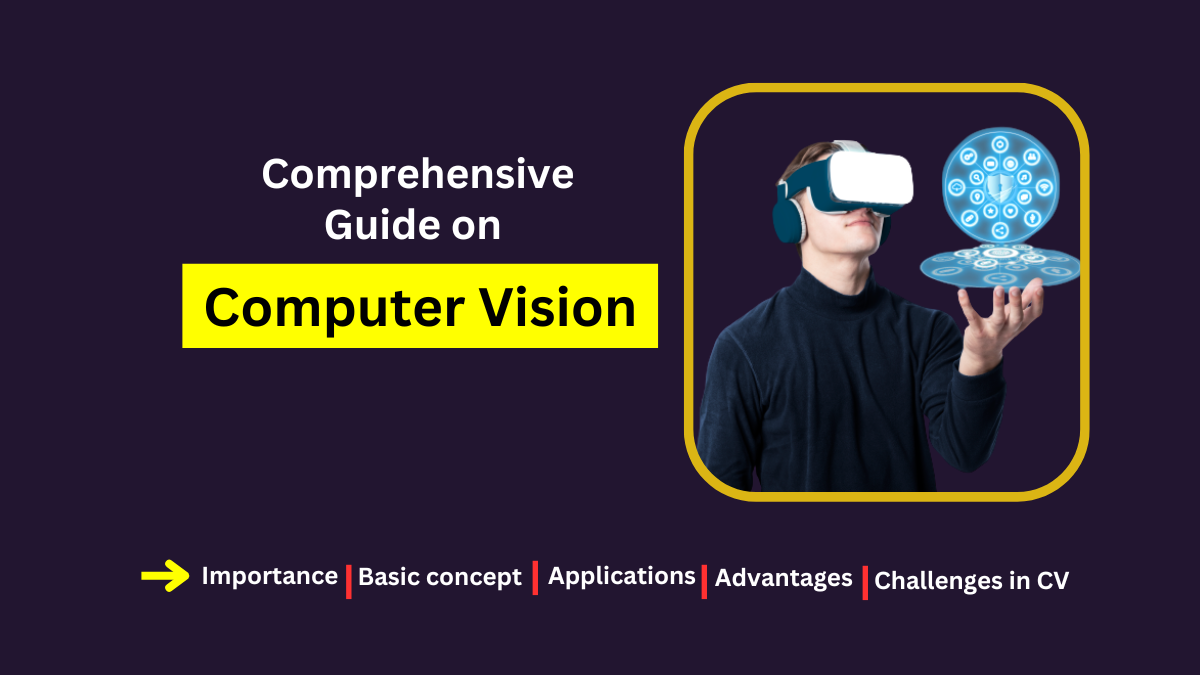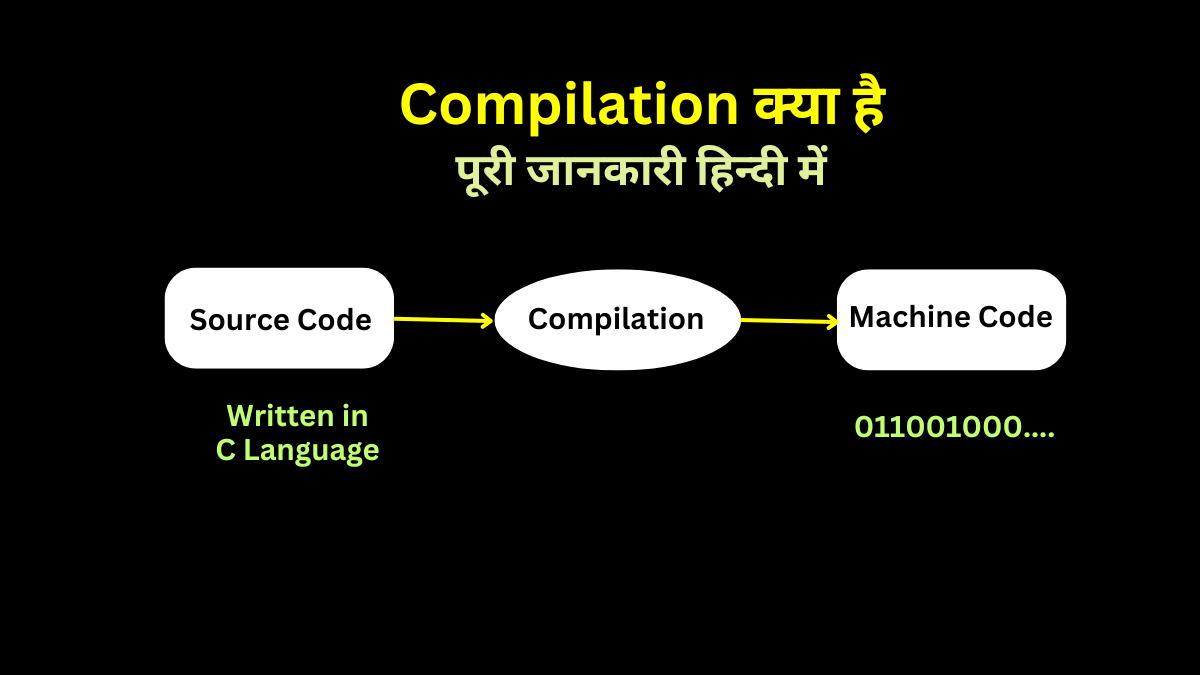Computer Vision is a branch of artificial intelligence that aims to enable computers to understand and interpret visual data, just like humans do. It involves the development of algorithms and techniques that allow machines to extract meaningful information from images or videos. The field of Computer Vision has witnessed significant advancements in recent years, revolutionizing various industries and applications. In this article, I will explain you what is computer vision, its importance in various fields, the components and processes involved in computer vision systems, its applications, advantages, challenges, and conclude with some frequently asked questions.
What is Computer Vision?
Computer vision refers to the ability of machines to analyze, interpret, and understand visual data, mimicking human visual perception. It involves the extraction of meaningful information from images or videos and enables machines to make intelligent decisions based on that visual input. By leveraging sophisticated algorithms and models, computer vision systems can recognize objects, detect patterns, classify images, and even understand complex scenes.
Importance of Computer Vision in various fields
Computer Vision plays a crucial role in various industries and fields, revolutionizing the way we interact with technology and enhancing our capabilities. Here are some key areas where Computer Vision has proven to be of great importance:
- Healthcare: Computer Vision is transforming healthcare by enabling faster and more accurate medical diagnoses. It aids in medical imaging analysis, disease detection, surgical planning, and monitoring patient health. Computer Vision algorithms can analyze medical images such as X-rays, MRIs, and CT scans to identify anomalies and assist healthcare professionals in making informed decisions.
- Automotive: The automotive industry is leveraging Computer Vision for applications like driver assistance systems, autonomous vehicles, and advanced driver monitoring. Computer Vision algorithms can recognize and track objects on the road, detect pedestrians, interpret traffic signs, and assist in collision avoidance, making driving safer and more efficient.
- Retail and E-commerce: Computer Vision is reshaping the retail industry by enabling visual search, product recognition, and augmented reality experiences. It allows customers to find products by simply taking a photo or using an image as a search query. Additionally, Computer Vision enables retailers to analyze customer behavior, optimize store layouts, and personalize shopping experiences.
- Manufacturing and Robotics: Computer Vision is widely used in manufacturing for quality control, defect detection, and robotic automation. It allows machines to inspect products and identify any defects or inconsistencies in real-time, improving production efficiency and reducing errors. Computer Vision also enables robots to perceive their environment, navigate autonomously, and perform complex tasks with precision.
- Security and Surveillance: Computer Vision plays a vital role in security and surveillance systems. It enables the detection of suspicious activities, facial recognition, object tracking, and crowd analysis. By analyzing video feeds in real-time, Computer Vision systems can enhance public safety and assist in crime prevention.
Also Read : Top 10 Best Books for Computer Science Students
Basic concept of Computer Vision
Computer vision systems involve several key components and processes that work together to analyze visual data. These components include:
- Image Acquisition: Image acquisition involves capturing visual data using cameras or sensors. It is the first step in the computer vision pipeline, where images or videos are acquired from various sources.
- Preprocessing and Image Enhancement: Preprocessing techniques are applied to raw image data to enhance its quality and prepare it for further analysis. This may involve operations like noise reduction, image denoising, color correction, and image normalization.
- Feature Extraction and Representation: In this step, relevant features are extracted from the preprocessed images. These features can be edges, textures, shapes, or other visual characteristics that capture essential information for subsequent analysis.
- Object Detection and Recognition: Object detection involves identifying and localizing objects of interest within an image or video. Computer Vision algorithms use various techniques, such as Haar cascades, deep learning-based models like YOLO (You Only Look Once), and R-CNN (Region Convolutional Neural Networks) to detect and recognize objects accurately.
- Image Segmentation: Image segmentation divides an image into meaningful regions or segments based on similarities in color, texture, or other visual properties. It is a fundamental task in Computer Vision and is useful for tasks like object tracking, scene understanding, and image editing.
- Image Classification and Categorization: Image classification involves assigning labels or categories to images based on their content. Machine learning algorithms, such as convolutional neural networks (CNNs), are commonly used for image classification tasks. It enables applications like image recognition, content-based image retrieval, and automated tagging.
- 3D Reconstruction and Depth Estimation: 3D reconstruction aims to create a three-dimensional model or representation of objects or scenes from two-dimensional images or videos. It involves estimating depth information and reconstructing the 3D structure using techniques like stereo vision, structure from motion, and depth from focus.
Also Read : How to Become a Good Python Programmer – Complete Guide
Applications of Computer Vision
Computer Vision finds applications in various domains, improving efficiency, accuracy, and automation. Here are some notable applications:
- Medical Imaging: Computer Vision is used for medical image analysis, assisting in the diagnosis of diseases, tumor detection, and surgical planning.
- Autonomous Vehicles: Computer Vision enables object detection, lane detection, and pedestrian recognition, contributing to the development of self-driving cars.
- Augmented Reality: Computer Vision is instrumental in creating immersive augmented reality experiences, overlaying virtual objects onto the real world.
- Facial Recognition: Computer Vision algorithms can recognize and verify individuals based on facial features, enhancing security systems and user authentication.
- Quality Control: Computer Vision systems can inspect products on production lines, identifying defects and ensuring quality control.
- Surveillance and Security: Computer Vision enables intelligent video surveillance, detecting suspicious activities and identifying objects or individuals in real-time.
Also Read : 50 Basic Python Coding Questions and Answers for Beginners
Advantages of Computer Vision
The adoption of Computer Vision offers several advantages:
- Improved Efficiency: It automates tasks that require visual understanding, reducing manual effort and increasing productivity.
- Enhanced Accuracy: Computer vision systems can achieve high levels of accuracy in image analysis, object recognition, and classification.
- Real-Time Processing: With advancements in hardware and algorithms, computer vision can process visual data in real-time, enabling instant decision-making.
- Increased Safety: In applications like autonomous vehicles and surveillance systems where safety is paramount, computer vision helps identify potential risks and take appropriate actions, reducing accidents and enhancing security.
- Data-driven Insights: By analyzing large volumes of visual data, computer vision provides valuable insights and patterns that can drive informed decision-making and strategic planning.
Also Read : What is Data Visualization Jobs, essential skills and Techniques for success
Challenges in Computer Vision
While Computer Vision has made significant progress, it still faces some challenges:
- Variability and Complexity: Real-world images and videos can have variations in lighting conditions, viewpoints, and occlusions, making it challenging for Computer Vision systems to accurately interpret them.
- Data Availability and Quality: Developing robust Computer Vision models requires large and diverse datasets. Obtaining annotated data can be time-consuming and costly.
- Interpretability: Deep learning models used in Computer Vision often lack interpretability, making it challenging to understand the reasoning behind their predictions.
- Ethical Considerations: Computer Vision raises ethical concerns regarding privacy, bias in algorithms, and potential misuse of visual data.
Also Read : How to Learn and Master Python Programming within one month
Conclusion
Computer Vision has emerged as a powerful technology that allows machines to perceive and interpret visual information. Its applications span across various fields, including healthcare, automotive, retail, manufacturing, and security. By understanding the basic concepts, components, and processes involved in Computer Vision systems, we can appreciate its capabilities and potential. However, challenges such as variability in visual data and interpretability remain, indicating that there is still ongoing research and development in the field.
FAQs
-
Yes, Computer Vision is widely used in social media platforms for tasks like image recognition, content filtering, and facial recognition for tagging users in photos.
-
The accuracy of Computer Vision systems depends on various factors such as the quality of data, complexity of the task, and the algorithms used. With advancements in deep learning, state-of-the-art Computer Vision models have achieved high levels of accuracy in many applications.
-
Some limitations of Computer Vision include difficulties in interpreting complex images, handling variations in lighting and occlusions, and the need for large and diverse datasets for training robust models.
-
No, Computer Vision also extends to video analysis, enabling tasks such as object tracking, activity recognition, and motion analysis.
-
The future prospects of Computer Vision are promising. Advancements in deep learning, coupled with the availability of large-scale datasets, will likely lead to even more accurate and sophisticated Computer Vision systems. The integration of Computer Vision with other emerging technologies like augmented reality and robotics will open up new possibilities and applications.



